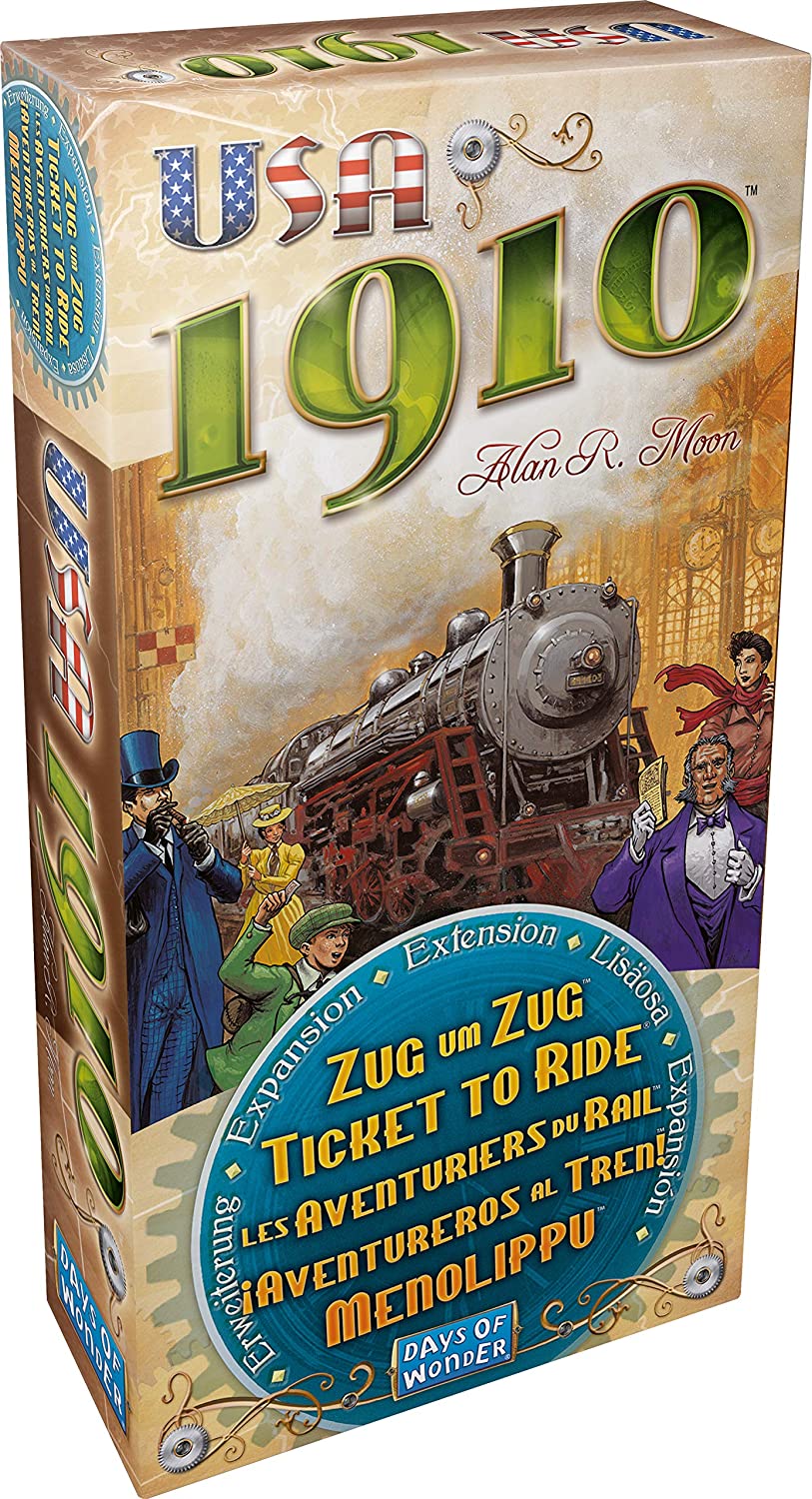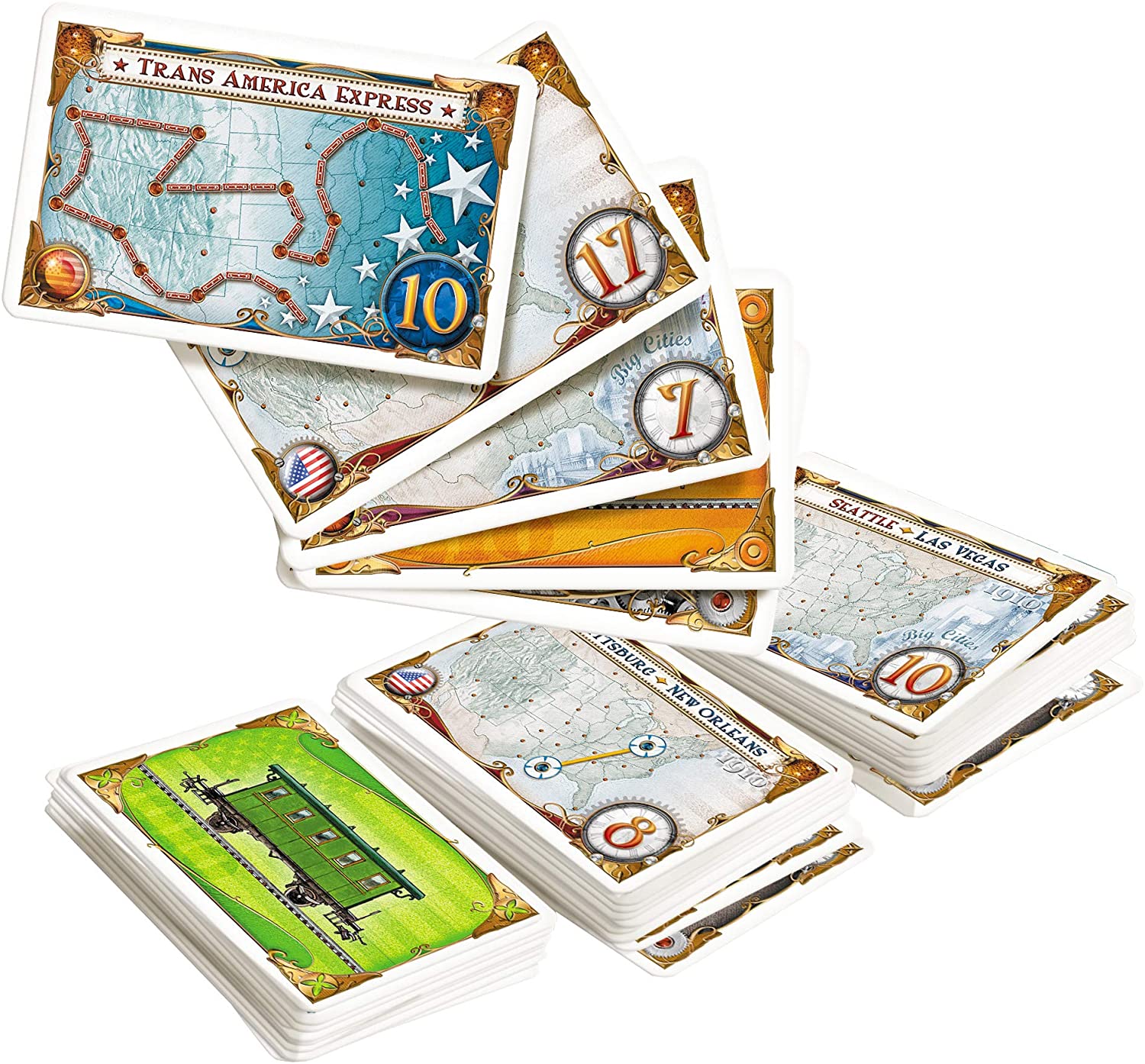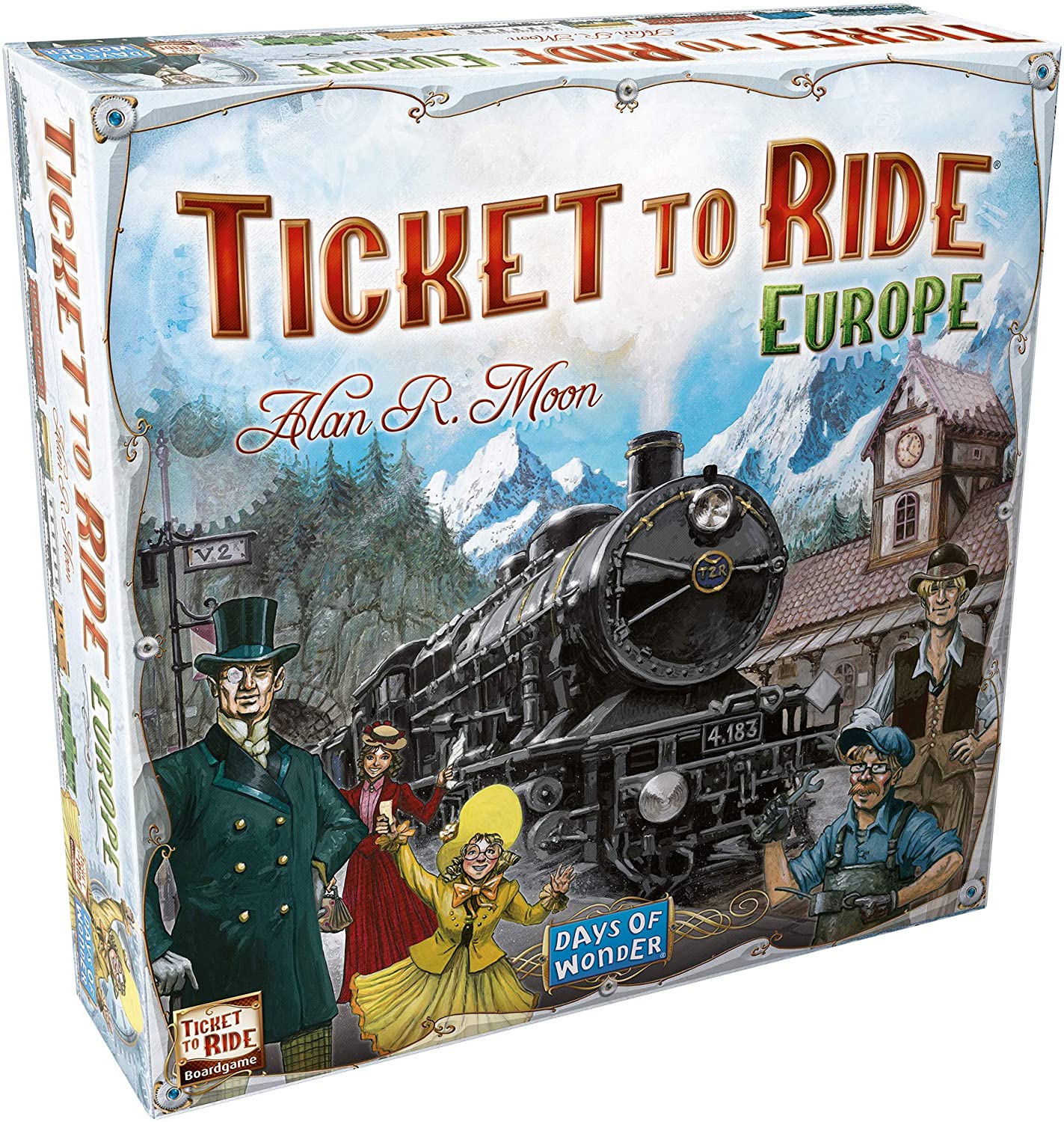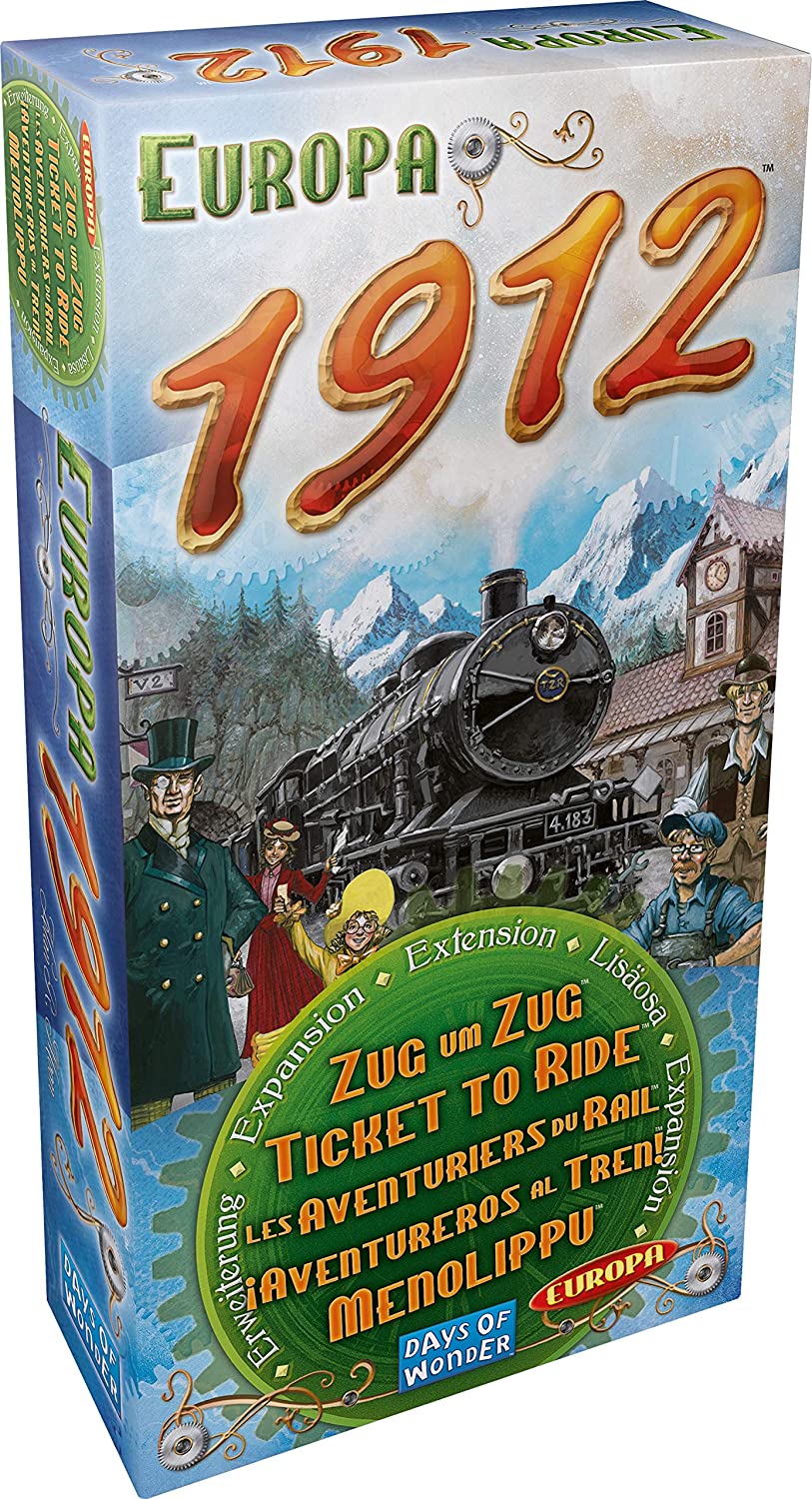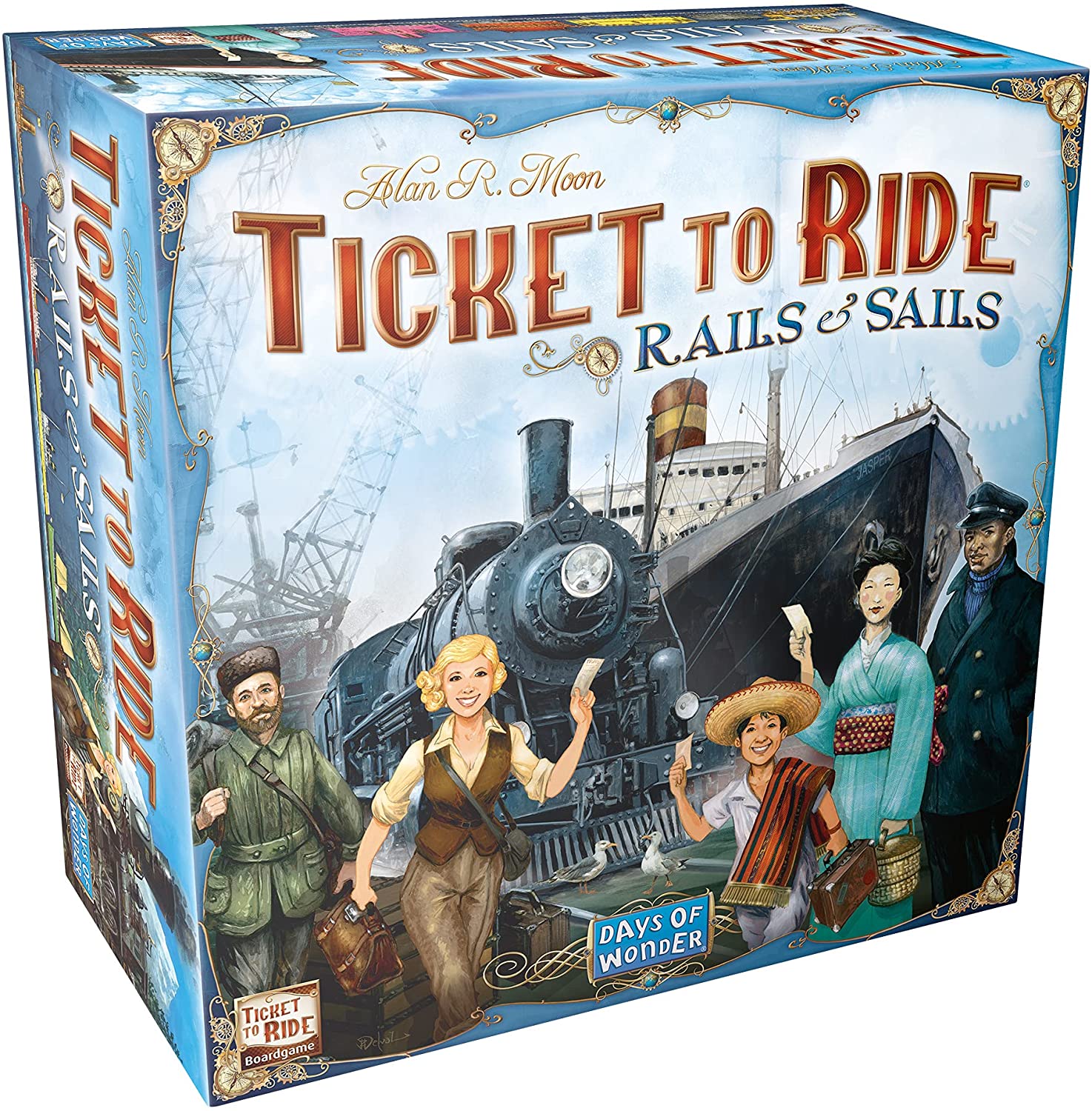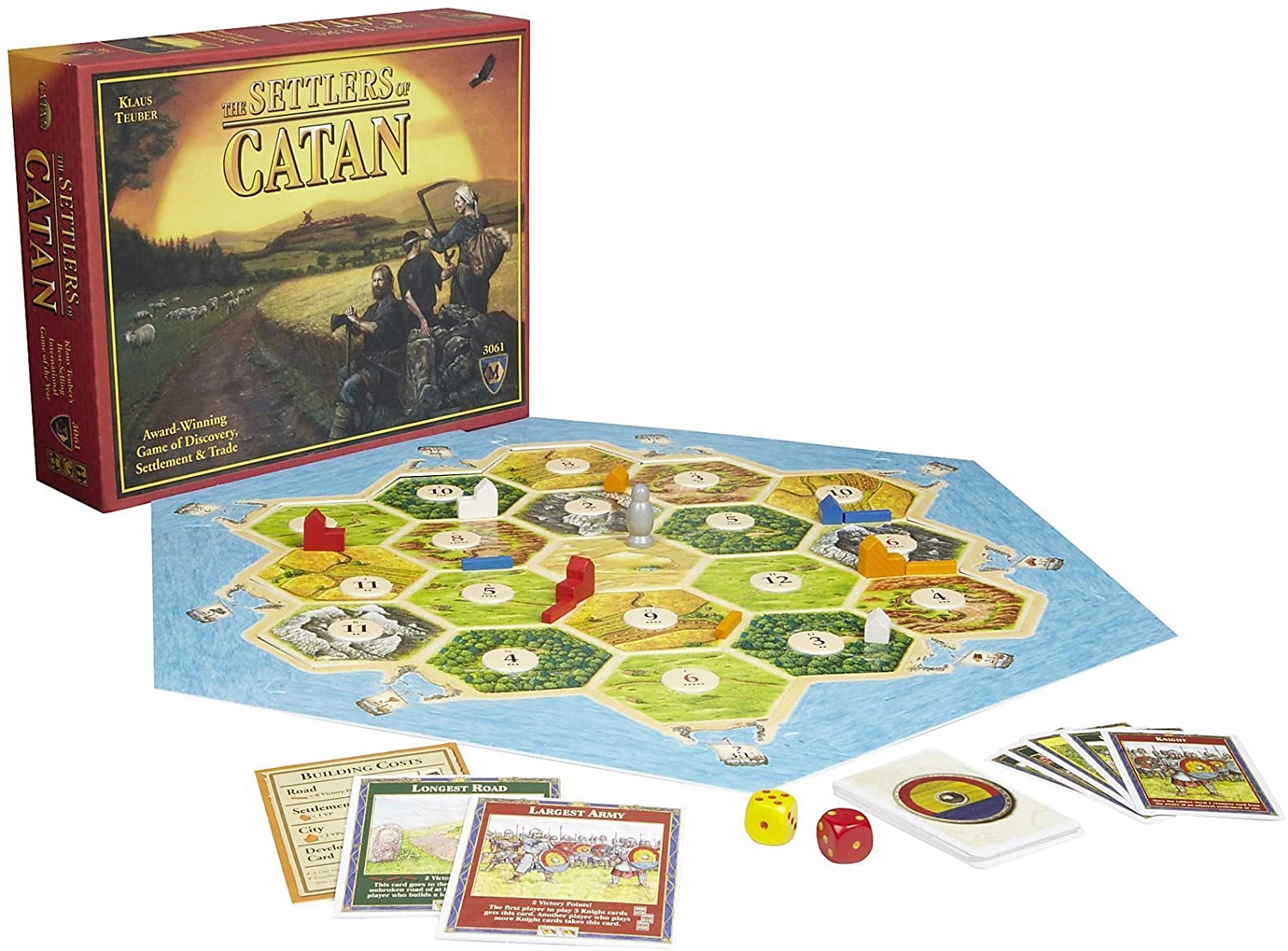Think you already know Ticket to Ride like the back of your hand? Have you played it so often that it feels like it’s lost some of its initial charm and excitement? If so, you’ll be thrilled to hear that the Ticket to Ride 1910 expansion pack truly packs an impressive punch.
With more ways to play than ever before, 181 new large-format cards, 35 new Destination Tickets, and an all-new Globe Trotter card, this is Ticket to Ride as you’ve never played it before.
With so much hype surrounding Ticket to Ride, you’re probably wondering how the 1910 expansion pack fares when it comes to gameplay. Does it improve on the original, or has the game finally run out of steam?
In this guide, find out everything you need to know about Ticket to Ride 1910, including new ways to play.
Ticket to Ride 1910: an Overview
- Players: 2-5
- Recommended age: 8+
- Playing time: 30-60 minutes
What started out in the early 2000s as a modest board game with a niche appeal has rapidly become a cult classic, with prominent publications such as The Guardian in the UK citing this age-of-steam game as being almost single-handedly responsible for reviving the industry.
Ticket to Ride’s reputation precedes it, but how did the game first come about?
Its designer, Alan R Moon, spent years working on games in relative obscurity, juggling his relatively unrewarding side-hustle with a slew of low-paid jobs. He was on the verge of giving up in 2003 when one of his ideas finally caught on, and Ticket to Ride was born.
The game was first published in 2004 by a company called Games of Wonder, and in the ten years following its release, it generated a staggering $150 million in sales, with over three million copies flying off the shelves.
Unsurprisingly, Ticket to Ride has also won a host of prestigious game awards, including Meeples’ Choice Award 2004, Spiel des Jahres 2004, and the International Gamers Award for General Strategy (multi-player) in 2005.
Since then, a number of expansion packs have been released to satiate the appetite of avid fans. The 1910 card pack came out in 2008 and was praised for solving one of the original game’s biggest – and only – flaws: the tiny size of the cards.
As well as offering larger cards, the pack also provides three new ways to play, which I’ll cover later on in this guide.
The Origins of Ticket to Ride
Before I cover how you actually play using the 1910 expansion pack, let’s quickly recap what Ticket to Ride is all about and where the inspiration for the game came from.
If you want an in-depth guide to the original game, you can find one here.
To put it simply, Ticket to Ride is a route-building game where players put down tracks across North America to connect different cities and complete tickets.
The idea for the game came to Moon when he was walking along the Atlantic shore in Beverly, Massachusetts.
Rail transport has had a huge impact on the history and development of America as a nation, not only thanks to its facilitation of international trade but also due to its role in the Civil War.
As a result, railroads have made their mark on the collective psyche of this great nation, and Ticket to Ride is clearly a manifestation of this.
The Aim of the Game
The game’s objective is to score as many points as you can. You do this by claiming routes between different cities in the US. At the end of the game, points are also subtracted for any incomplete tickets, and a ten-point bonus is awarded to the player with the longest continuous set of routes.
How to Play
There are three variations of the game that you can play using the Ticket to Ride 1910 expansion pack. I’ll give an overview of each version, explaining how they differ, before explaining how to play the original game since each is based on that.
1910
To play the 1910 version of the game, follow the standard rules only using the new tickets from the pack, which say “1910” in the right-hand corner. Swap the Longest Route Bonus card with the new Globetrotter Most Completed Tickets card.
The Mega Game
Both bonus cards are in play. Start by shuffling all sixty-nine tickets and deal five to each player at the start of the game. As the game progresses, whenever you draw tickets, you should draw four and keep at least one. When you discard a ticket, it should always be placed at the bottom of the pile.
The Big Cities
Play using tickets that contain at least one big city (the cities on tickets are printed in red). These include:
- Chicago
- Dallas
- Houston
- Los Angeles
- Miami
- New York
- Seattle
There are thirty-five of these tickets in total; fifteen from the original set and twenty new ones.
At the start of the game, shuffle the Big Cities tickets and give four to each player. During the game, whenever you draw tickets, make sure to draw four and keep at least one. As always, discarded tickets go at the bottom of the draw pile.
Setup
Place the board on the table. Each player takes a set of forty-five colored train cards and a matching score marker which should be placed on the start.
Next, shuffle the train cards and give four to each player. Place the rest of these cards next to the board, with the top five facing up. The Longest Path Bonus card is also placed face-up beside the board.
After shuffling the Destination cards, deal three to each player. Players then choose which ones to keep. They have to keep at least two. Place the returned cards at the bottom of the Destination Ticket deck.
Gameplay
Each turn, players must complete one of the following actions:
- Draw Train Car cards
- Claim a route
- Draw Destination tickets
Draw Train Car cards
Two Train Car cards may be drawn. Choose between the face-up cards or select the top card from the deck.
If a Locomotive card is selected, the player cannot choose a second card. After the first card has been selected, if the second one is a Locomotive card, then it can’t be taken by that player.
You can have any number of cards in your hand at any given time.
If three of the face-up cards are Locomotive at any time, all five cards should be discarded and replaced.
When the deck is empty, a player can no longer draw this type of card; they can only claim a route or draw Destination Ticket cards.
Claiming routes
The player must play a set of cards equal to the number of spaces in that route to claim a route. These cards have to be of the same specific type.
When a route is claimed, the player should place a plastic train on each of the spaces on the route; the cards used should be discarded. The player receives points for their claim and should move their scoring marker.
Players can claim any open route on the board. However, only one route can be claimed per turn.
Destination Ticket cards
A player can draw more Destination Ticket cards by selecting three new cards from the top of the deck. At least one of these cards must be kept; it’s up to the player if they wish to keep more.
Each Destination Ticket includes the name of two cities on the map along with a point value. When the two cities are connected by the player, they earn that number of points.
However, if the player fails to connect these cities, then the same number of points will be deducted.
End of the Game
The game concludes when a player’s stock of colored trains gets down to two or fewer. When this happens, it’s time for the final turn.
After the last turn, the game ends, and players have to calculate their final scores.
How to Win
Points for completed routes are counted throughout the game. Once it has finished, all players reveal their Destination tickets, adding or subtracting the relevant values.
Don’t forget that the player with the longest continuous path of routes earns 10 extra points.
The player with the highest score wins the game.
Who is Ticket to Ride 1910 for?
As with the original game, the Ticket to Ride 1910 expansion pack is for 2-5 players aged eight and above.
It’s worth stressing that, while this game might come across as having quite a niche appeal and may even seem boring, it’s actually a lot more fun than you might think. In fact, it’s one of the best board games out there if you’re looking for something suitable for everyone.
Ticket to Ride is definitely a great family game. It appeals to children and adults alike thanks to its deceptively simple gameplay. You can learn how to play in less than ten minutes, and once you start, you’re likely to get hooked!
There are plenty of complex strategies that can keep seasoned players entertained, but you can also choose to keep things simple, which is why the game is so successful.
However, if you need a suitable game for younger children, check out our guides to the best games for four year olds and five year olds.
How Many Pieces Are There in Ticket to Ride 1910?
The original game contains:
- 1x board map
- 225x colored train cards
- 144x illustrated cards
- 5x scoring markers
- 1x rules booklet
The expansion pack comes with 181 cards, a rulebook, and a tin. 110 of the cards are trains, while 69 are Destination tickets (30 from the original game, 35 new, and 4 from the out-of-print Mystery Train expansion). The final two cards are bonus tickets.
Other Ticket to Ride Expansion Packs and Games
Here are some of the other available expansion packs.
Ticket to Ride Europe
This was the first follow-up to be released after the original Ticket to Ride Game came out. The European edition allows you to adventure across turn-of-the-century European cities, and it also includes exciting new features such as tunnels, ferries, and train stations. It isn’t an expansion pack, so it comes with everything you need to play.
Ticket to Ride Europa 1912
Europa 1912 is an expansion pack featuring 101 Destination tickets, an expanded map, warehouses, depots, and multiple ways to play.
Ticket to Ride Rails and Sails
Prefer hitting the waves to the railway? If so, the Rails and Sails edition is perfect for you! Travel all over the world, seeing countries and continents, all from the comfort of your own home. Veteran Ticket to Ride players will love the new lease of life this edition brings to the much-loved game.
Alternatives to Ticket to Ride 1910
So you’ve either decided Ticket to Ride 1910 just isn’t for you, or you love it so much you need to find something similar. So what else can you try? Here are my recommendations. We also have a guide that covers the best board games of all time.
Settlers of Catan
Settlers of Catan, better known simply as Catan, is one of the most successful board games, certainly on par with Ticket to Ride. It’s a game in which players battle it out to become the dominant force on the island of Catan by building settlements, cities, and infrastructure.
Read our full guide to Catan here.
- Players – 3-4
- Recommended age – 10+
- Playing time – 60-120 minutes
Lost Ruins of Arnak
Similarly, Lost Ruins of Arnak is another excellent board game rooted in travel and exploration, much like Ticket to Ride. However, the key difference is that Arnak is much less destination-oriented; instead, the game is focused on uncovering the culture and secrets of ancient civilizations on an unexplored island.
Want to know more? Check out our Lost Ruins of Arnak guide.
- Players – 1-4
- Recommended age – 12+
- Playing time – 30-120 minutes
Ticket to Ride 1910 – Is It Worth Buying?
So now that I’ve discussed the 1910 expansion pack, what it includes, and how to play, you’re probably wondering whether I’d actually recommend buying it. The answer is that I undoubtedly would.
If you’re reading this guide, chances are you’re already an ardent Ticket to Ride fan, so there’s no need for me to preach to you about how good this game is; you already know. (If you haven’t played the original, you’ll be better off reading our Ticket to Ride guide here).
The 1910 pack takes everything you know and love about the original game and manages to improve on it – which isn’t something that can be said for every expansion deck out there. As a result, the cards are bigger, there’s more variation, and you have way more choice in how you play.
One of the biggest improvements that this pack brings about is balance. Whereas before, it was difficult to win in the East and Southwest, now the opportunities seem to be more evenly dispersed across the map, which can only be a good thing.
Ultimately, I would recommend the 1910 expansion pack to anyone who owns a copy of the original Ticket to Ride game.
Frequently Asked Questions
Question: Can you use the 1910 expansion pack with the 10th-anniversary edition?
Answer: The 10th-anniversary edition already contains most if not all of the new cards in the 1910 pack, so there’s no need to purchase the two separately.
Question: Does the 1910 expansion work with Rails and Sails
Answer: Unfortunately, it doesn’t because Rails and Sails is a global map, whereas 1910 is for the USA only.
Question: Where can I buy Ticket to Ride 1910?
Answer: You can purchase the expansion pack from Amazon here.
Question: What other Ticket to Ride board games are there?
Answer: Here’s a list of other Ticket to Ride spin-off games that are available:
• Ticket to Ride London
• Ticket to Ride First Journey
• Ticket to Ride Japan
• Ticket to Ride New York
Recommended reads:
- A Complete Overview of Ticket to Ride
- A Complete Overview of Ticket to Ride India
- Catan Junior Guide
- Stratego Pieces Explained – Must-Know Facts - February 28, 2023
- Wahoo Board Game Guide – AKA Aggravation Guide - February 22, 2023
- Pokemon Monopoly Guide - February 22, 2023


